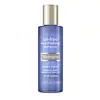What's inside
What's inside
 Key Ingredients
Key Ingredients

No key ingredients
 Benefits
Benefits

 Concerns
Concerns

 Ingredients Side-by-side
Ingredients Side-by-side

Ethylhexyl Methoxycinnamate 5.9%
UV AbsorberTitanium Dioxide 3.5%
Cosmetic ColorantZinc Oxide 2.8%
Cosmetic ColorantWater
Skin ConditioningMethyl Trimethicone
Skin ConditioningPhenyl Trimethicone
Skin ConditioningDimethicone
EmollientTriethylhexanoin
MaskingButylene Glycol
HumectantTrimethylsiloxysilicate
EmollientYeast Extract
Skin ConditioningPEG-10 Dimethicone
Skin ConditioningLauryl PEG-9 Polydimethylsiloxyethyl Dimethicone
Skin ConditioningAlumina
AbrasiveCitrus Grandis Peel Extract
AstringentBetula Alba Bark Extract
MaskingSaccharomyces Lysate Extract
HumectantAstrocaryum Murumuru Seed Butter
EmollientC12-15 Alkyl Benzoate
AntimicrobialGlycerin
HumectantSodium Myristoyl Sarcosinate
CleansingAcetyl Glucosamine
Skin ConditioningCaprylyl Methicone
Skin ConditioningMethicone
EmollientPolyglyceryl-6 Polyricinoleate
EmulsifyingDisteardimonium Hectorite
StabilisingDimethicone Crosspolymer-3
Skin ConditioningIsopropyl Titanium Triisostearate
EmollientLecithin
EmollientLaureth-7
EmulsifyingTocopheryl Acetate
AntioxidantMagnesium Ascorbyl Phosphate
AntioxidantDimethicone/PEG-10/15 Crosspolymer
Dipropylene Glycol
HumectantSodium Chloride
MaskingCaprylyl Glycol
EmollientTetrahexyldecyl Ascorbate
AntioxidantDisodium EDTA
Phenoxyethanol
PreservativePolyaminopropyl Biguanide
PreservativeCI 77891
Cosmetic ColorantIron Oxides
Mica
Cosmetic ColorantCI 77163
Cosmetic ColorantEthylhexyl Methoxycinnamate 5.9%, Titanium Dioxide 3.5%, Zinc Oxide 2.8%, Water, Methyl Trimethicone, Phenyl Trimethicone, Dimethicone, Triethylhexanoin, Butylene Glycol, Trimethylsiloxysilicate, Yeast Extract, PEG-10 Dimethicone, Lauryl PEG-9 Polydimethylsiloxyethyl Dimethicone, Alumina, Citrus Grandis Peel Extract, Betula Alba Bark Extract, Saccharomyces Lysate Extract, Astrocaryum Murumuru Seed Butter, C12-15 Alkyl Benzoate, Glycerin, Sodium Myristoyl Sarcosinate, Acetyl Glucosamine, Caprylyl Methicone, Methicone, Polyglyceryl-6 Polyricinoleate, Disteardimonium Hectorite, Dimethicone Crosspolymer-3, Isopropyl Titanium Triisostearate, Lecithin, Laureth-7, Tocopheryl Acetate, Magnesium Ascorbyl Phosphate, Dimethicone/PEG-10/15 Crosspolymer, Dipropylene Glycol, Sodium Chloride, Caprylyl Glycol, Tetrahexyldecyl Ascorbate, Disodium EDTA, Phenoxyethanol, Polyaminopropyl Biguanide, CI 77891, Iron Oxides, Mica, CI 77163
 Reviews
Reviews

Ingredients Explained
These ingredients are found in both products.
Ingredients higher up in an ingredient list are typically present in a larger amount.
Dipropylene Glycol is a synthetically created humectant, stabilizer, and solvent.
This ingredient helps:
Dipropylene glycol is technically an alcohol, but it belongs to the glycol family (often considered part of the ‘good’ alcohols). This means it is hydrating and gentle on skin unlike drying solvent alcohols like denatured alcohol.
As a masking agent, Dipropylene Glycol can be used to cover the smell of other ingredients. However, it does not have a scent.
Studies show Dipropylene Glycol is considered safe to use in skincare.
Learn more about Dipropylene GlycolGlycerin is already naturally found in your skin. It helps moisturize and protect your skin.
A study from 2016 found glycerin to be more effective as a humectant than AHAs and hyaluronic acid.
As a humectant, it helps the skin stay hydrated by pulling moisture to your skin. The low molecular weight of glycerin allows it to pull moisture into the deeper layers of your skin.
Hydrated skin improves your skin barrier; Your skin barrier helps protect against irritants and bacteria.
Glycerin has also been found to have antimicrobial and antiviral properties. Due to these properties, glycerin is often used in wound and burn treatments.
In cosmetics, glycerin is usually derived from plants such as soybean or palm. However, it can also be sourced from animals, such as tallow or animal fat.
This ingredient is organic, colorless, odorless, and non-toxic.
Glycerin is the name for this ingredient in American English. British English uses Glycerol/Glycerine.
Learn more about GlycerinChances are, you eat sodium chloride every day. Sodium Chloride is also known as table salt.
This ingredient has many purposes in skincare: thickener, emulsifier, and exfoliator.
You'll most likely find this ingredient in cleansers where it is used to create a gel-like texture. As an emulsifier, it also prevents ingredients from separating.
There is much debate on whether this ingredient is comedogenic. The short answer - comedogenic ratings don't tell the whole story. Learn more about comegodenic ratings here.
The concensus about this ingredient causing acne seems to be divided. Research is needed to understand if this ingredient does cause acne.
Scrubs may use salt as the primary exfoliating ingredient.
Learn more about Sodium ChlorideWater. It's the most common cosmetic ingredient of all. You'll usually see it at the top of ingredient lists, meaning that it makes up the largest part of the product.
So why is it so popular? Water most often acts as a solvent - this means that it helps dissolve other ingredients into the formulation.
You'll also recognize water as that liquid we all need to stay alive. If you see this, drink a glass of water. Stay hydrated!
Learn more about Water